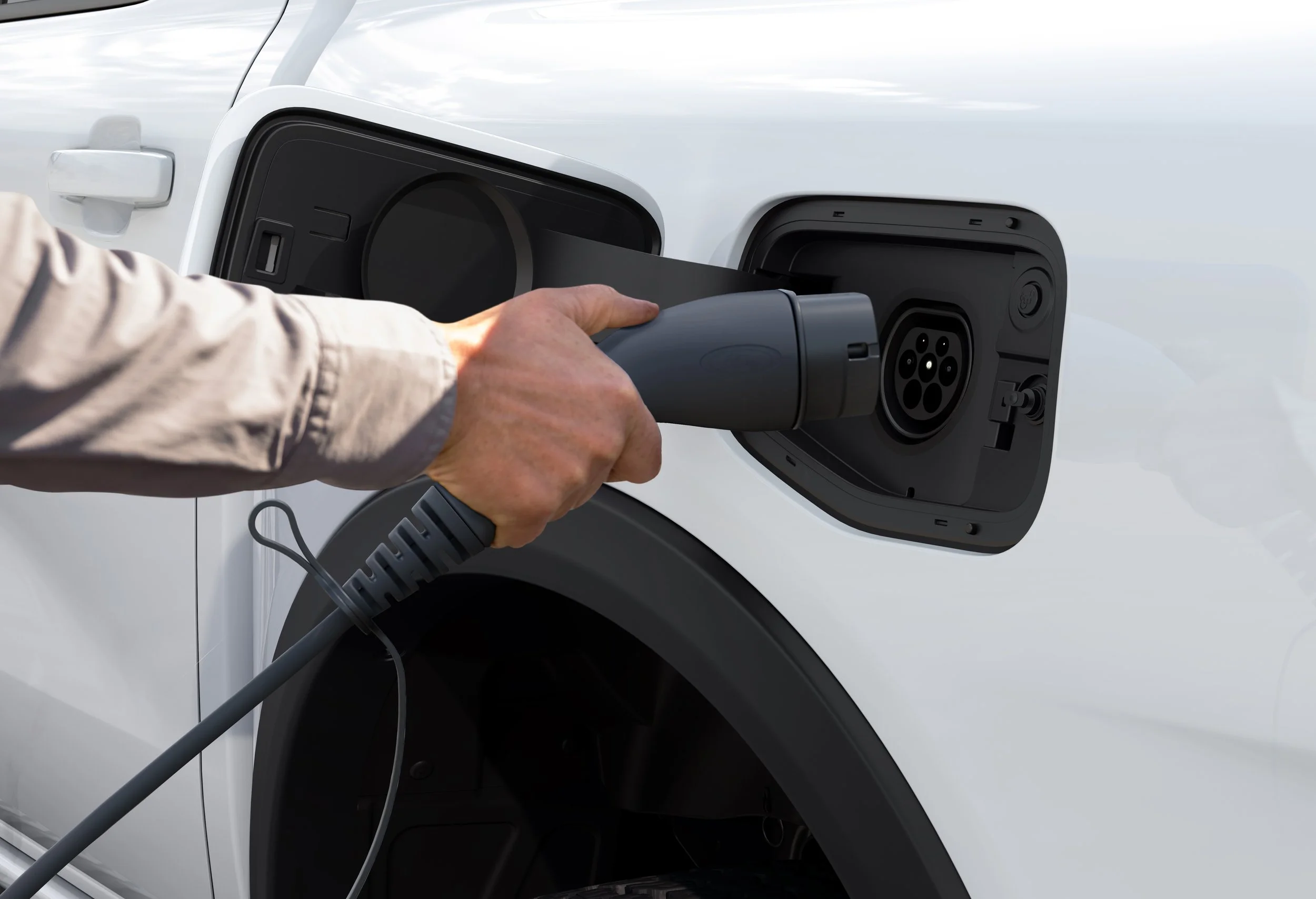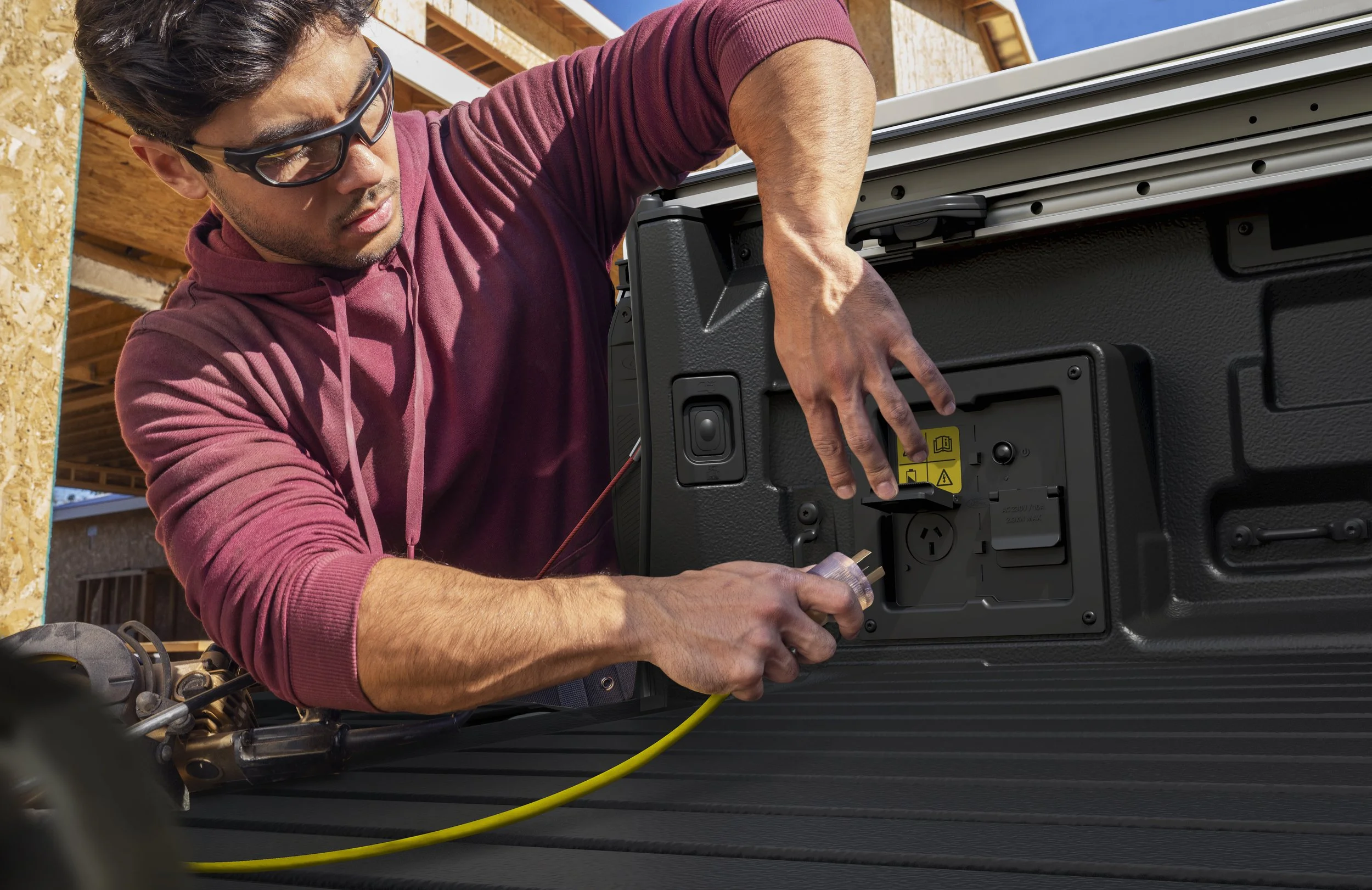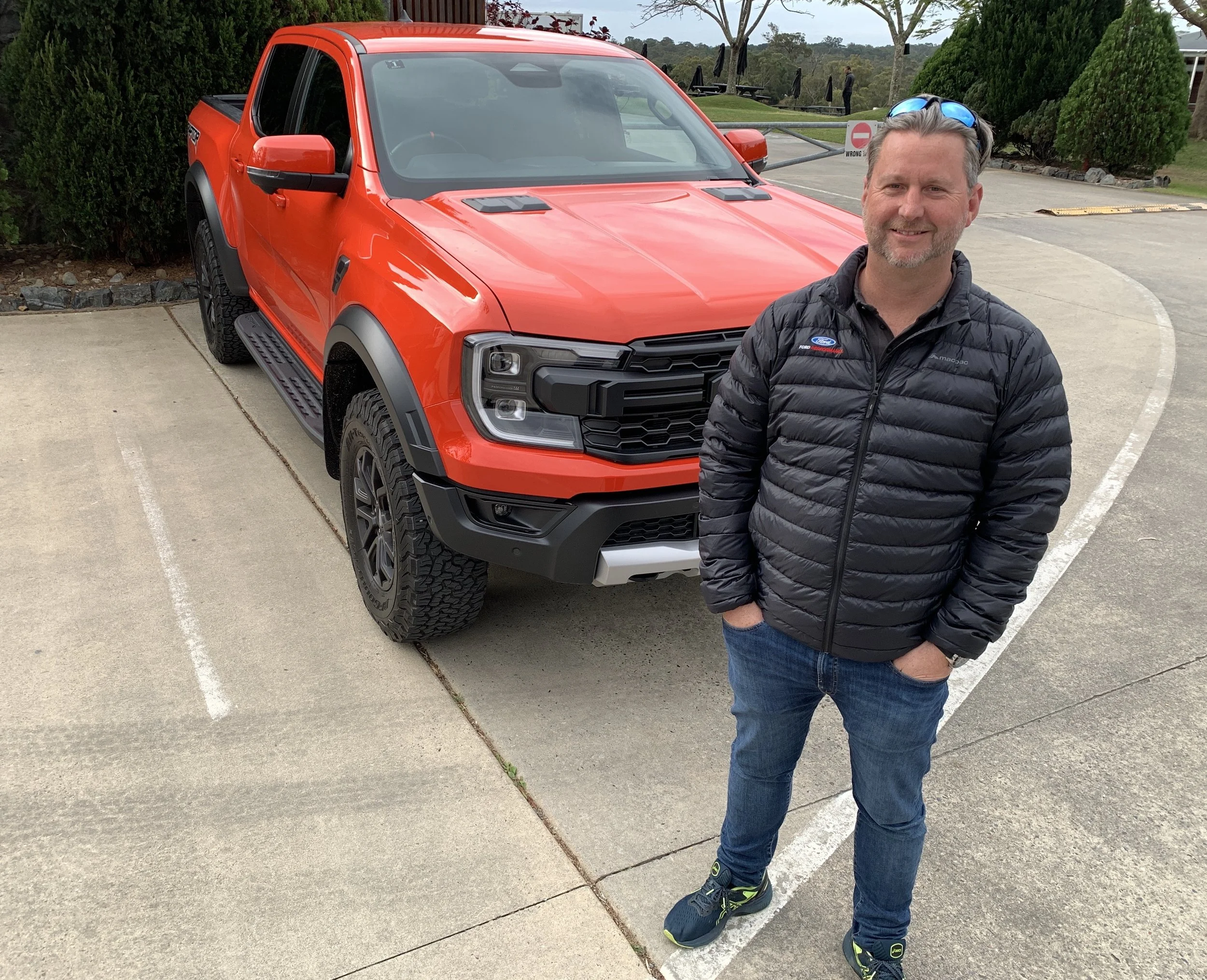Ranger PHEV: Brute strength battery breakthrough 4WD coming
/Ford NZ sees big potential for a green-themed category changer with full electric driving yet still maintaining established towing and mud capability.
WHETHER a battery-assisted drivetrain delivering around 45 kilometres’ pure electric driving coming to Ford Ranger from early 2025 will deliver a CO2 count low enough to escape Clean Car censure is not clear, the brand’s national operation admits.
However, Ford New Zealand believes regardless of where the plug-in hybrid petrol-electric powertrain announced today stands with the legislation that penalises all high CO2 product, including every fossil fuel-reliant one-tonne ute sold here, the technology will leave Ranger well-credentialed as requirement for low emissions vehicles become all the more critical.
“We are not able to confirm exact C02 at this point but it will be a substantially lower footprint than today’s powertrains,” managing director Simon Rutherford says.
“It will of course be at least Euro 6 emissions compliant and sold in Europe.
“Irrespective of the Clean Car Discount’s future the most important factor is that we have a fully capable low-emissions Ranger coming to market.”
Wed to a 2.3-litre petrol turbocharged four cylinder, the new powertrain is promising type-best torque - a status presently held by the 600Nm V6 turbodiesel - and enough pure electric operability to fulfil an average driving day, according to Ford estimate, while maintaining the heavy-duty and off-road capability of the current purely fossil-fuelled four-wheel-drive models.
It allows introduction of Pro Power, plugged from the hybrid version of Ford’s US-centric F-150 full-sized truck, which effectively it turns the vehicle into a mobile energy bank that has enough grunt to run electrical appliances.
Ford has yet to offer any specific technical detail. Data relating to the battery size, actual combined power and torque, emissions and economy seem to be months away. On the emissions side, though, getting on the good side of Clean Car with the 2.3-litre might be big ask, as in isolation it creates 254 grams per kilometre of CO2. Very much above the limit.
Images of a prototype here suggest a programme centred in Australia, the home ground for global Ranger development, is well under way.
Rutherford says it is not policy to share volume expectation, but he believes the PHEV won’t struggle regardless of the future of Clean Car Discount (CCD), which has become an election issue.
The regulation could be a distant memory by the time the battery-fed Ranger lands as any National-led government from next month’s general election has vowed to dump it by December 31.
“We don’t provide detailed forecasts on annual volume or share,”” Rutherford says.
“But we do anticipate strong volumes at launch and to increase volumes as each year passes beyond launch as we and our customer pursue more sustainable motoring with no compromise on capability.
“New Zealanders are rapidly transitioning to electrified vehicle solutions,” he added.
“We anticipate … a more sustainable, low emissions solution will appeal across retail, business, rural and urban customers alike,” adding that “the EV only capability will be extremely useful for Ranger customers as it can be easily charged at home, and many customers may travel 40km or less per day.”
He reminds Ford NZ has already committed to weaning off absolute fossil fuel reliance.
The fully electric Mustang Mach-E, Puma in full electric and hybrid, Focus in mild hybrid and Escape in PHEV and hybrid lent credibility in the passenger space. Wholly electric Transits, with an electric Tourneo to come, also put a stake into the commercial sector.
Intention to include a electric assistance drive system was clearly signalled when Ranger released in mid-2022, when engineers going so far as to pinpoint where the battery would site within the updated T6 body on frame chassis.
Ford has expertise, having already implemented a hybrid drivetrain of seemingly like-minded capability into F-150.
Potential that PHEV Ranger could be the first big-name ute producer to adopt active battery assistance seems strong.
A self-charging set-up is coming to the biggest rival, Hilux, but it does not lend pure electric running and such a modest improvement in economy is cited that while Toyota New Zealand intends to badge it as a hybrid, Australia won’t.
Mitsubishi has indicated PHEV is coming to the new Triton, but though the pure diesel is out next year, thought is that the electric-associated type is several years away. Given it derives from Triton, the new Nissan Navara could become a candidate for that tech. China’s BYD is said to be developing a fully electric ute.
As for Ranger’s under-skin twin, Volkswagen Amarok? What’s to be made of Ford declining to say if the PHEV will come out of Thailand - current sourcing point for NZ-market stock - or from the other primary Ranger production source, a Ford factory in South Africa? The latter also builds Amarok for us, including one with the 2.3-litre. If VW is to have access, a common assembly point would make sense.
Ford says it’s too early to go into which Ranger variants are going to provision with the powertrain but likelihood of it carrying a premium seems certain.
Rutherford says pricing competitively is key.
“…but I think it would be logical that this is premium powertrain as it offers zero emission driving capability and potentially more power and torque than any other powertrain in the line-up.
“However at this point we are not is a position to discuss pricing.”
In releasing initial detail on September 14, under an embargo that lifted this evening, Ford Australia confirmed speculation the PHEV drivetrain is a parallel set-up, with the electric motor integrated into the transmission. Ranger uses a 10-speed automatic.
That’s also the method used by F-150, where a 35kW electric motor in a 10-speed auto augments the traditional motor and gets power from a liquid-cooled 1.5kWh lithium-ion battery.
Ford’s images identifies it having AC-pure recharging with a bespoke port on the left side, adjacent to the petrol tank filler, both behind individual lookalike flaps.
The 2.3-litre petrol sold for a while in the Mustang here - and was largely ignored by the car’s V8-craving crowd - and also powered the Focus ST hot hatch.
It has placed into latest Ranger for the United States and Europe; a market served by the Silverton, South Africa plant.
It also can be found in 222kW/452Nm tune in a NZ-market Amarok cited as a limited count, toe-in-the-water exercise: Just 20 examples at $90,000 - so only a few thou shy of the Raptor V6, packing 292kW/583Nm.
Ford has yet to say exactly how much more impetus the electric involvement will give, but vows Ranger PHEV will deliver the most torque of any Ranger engine. Ford has other hybrid powertrains, but this is the first involving the 2.3.
While the PHEV integration allows the type to maintain its 1200kg deck load and 3.5 tonne towing capabilities, that’s dependent on it being in a mode in which engine and motor work in tandem. This is the type’s default setting and is being called ‘EV auto’.
Towing is still possible with a pure electric drive, called ‘EV Now’, but the weight maximum will reduce, though Ford will not say by how much.
The model also has ‘EV Later’ and ‘EV charge’ modes - the first allowing drivers to cut-out the electric impetus until they chose to use it and the latter using the engine as a generator to pep up the battery.
The second function is integral to the PHEV’s new-to-type Pro Power function, a technology already in use with the hybrid and fully electric editions of the make’s largest pick-up, the F-150, but not seen on any one-tonne ute here.
Pro Power acts as a vehicle-to-load feature, Ranger provisioning with power outlets, one embedded in the cargo bed, another in the cabin.
Ford Australia’s presentation proposed Pro Power being used to operate of worksite power tools, such as a skill saw. It says Pro Power will also easily handle camping gear and laptops.
Rutherford (above) foresees Pro Power being highly sought after. "We think (it) will offer great value add to many customers in different use cases.”
As portentous the PHEV’s announcement landing at a time of uncertainty about the future of the ‘ute tax’ might seem, reality is that CCD’’s sliding scale of penalties - which are medium to full out for utes - has not disturbed Ranger’s sales appeal, despite it loading up to $6555 onto recommended retail at Raptor V6 petrol level, with the V6 diesel only slightly lower.
Rutherford acknowledges the six-cylinders that landed last year and stand as the most powerful engines in the model type are in great demand.
However, he disputes that they are steering buyers tastes, regardless that statistics show they do influence preference across the high-end fare.
Asked if he imagined interest in the V6s might wane once the PHEV is here, Rutherford said the other current option, a 2.0-litre biturbo diesel - the only engine carried over from the previous generation - has been the bestselling powertrain “by a long way”, with more than 60 percent of sales year to date.
He says that in itself is a sign the market acknowledges the importance of economy, relatively low emissions and good power.
Despite the four cylinder doing well, registrations data signals the V6s are still very much integral to Ranger maintaining as Ford’s strongest selling vehicle, the ute sector’s top-selling choice and, often, the country’s best-selling new vehicle.
Neither six is an environmental paragon but the twin turbo V6 petrol that restricts to the Raptor stands out as being especially at odds with global warming concern; being the thirstiest and highest CO2 choice in the one tonne ranks.
The buy-in hardly gells with brand contention about most Ranger buyers buying their utes for work and business. The derivatives are expensive and load heavily with features especially attractive for family and recreational use.
Customers have been penalised by CCD since Ranger’s launch. This ramped up on July 1, making Raptor a $100,000 ask. Yet, in the same month Raptor V6, accounted for half Ranger’s market-topping landed volume. Ford says that was simply a circumstance of vehicles ordered months ago finally landing, in a single consignment.
The implementation of Clean Car Standard this year means Ford also pays a fee for every high CO2 vehicle it lands. Those are much lower with the four-cylinder turbo diesel than with the V6s.
Rutherford says CCD has been “divisive, unfair and unaffordable” - but has a different view in respect to CCS.
“The CCD started well but has grown out of control and has penalised buyers who do not yet have an attainable, suitable and capable option.”
CCS should stay, albeit with modification if CCD goes, so that there is incentive for those brands capable of introducing low emissions vehicles.
“There should also be some form of discount to ensure there is an advantage to bringing in EU6-capable vehicles before it is mandated.
“We need to transition at the pace technology enables as this impacts affordability and scalability. If we get ahead on the affordability curve, we will actually go backwards as the fleet simply ages.”
What chance of Ranger going full electric? Ford North America has, of course, turned the F-150, it’s best selling model in the US and Canada, into a battery-specific model, called Lightning.
Volkswagen has also previously indicated thought it has the engineering expertise to turn Amarok into a fully battery-wed model.
Ford Australia says that direction was considered as an option to to going PHEV, but rejected. A fully electric Ranger, it has suggested, would be unable to meet the ICE versions’ towing and heavy duty hefting abilities.
However has also decided to put more store into the hybrid F-150, as a hedge against reluctance among U.S. truck buyers to go all-electric, with production of hybrid F-150 to double next year.
In theory, the Ford Everest sports utility could also take the PHEV, given they’re on closely-related platforms. However, Ford Australia has emphasised it has nothing to say about that.
In June a website in Australia aired thought about prospect of a Ranger PHEV, which it said will also be sold in North America, where it will spawn a long-awaited plug-in hybrid version of the Ford Bronco four-wheel-drive not sold here.
























